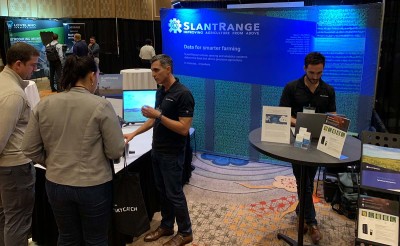We’ve detailed how SlantRange has utilized drones to improve the accuracy of airborne measurements as well as the company’s efforts to create an IoT ecosystem in agriculture, highlighting the numerous ways SlantRange has enabled new data insights for enterprise agriculture stakeholders over the years. Their efforts to provide tools that can better quantify and predict crop performance have created real value. With the announcement that Hiphen and SlantRange are coming together, these efforts are set to be taken to another level.
Hiphen SA, of Avignon, France, has been delivering high value data to seed breeders, product developers, food processors, vertical farms, and crop researchers across the globe since 2014. That focus makes the synergies between the two companies obvious, as Hiphen and SlantRange both primarily target agricultural input suppliers. Both are focused on large enterprises that supply seed, crop protection, and crop nutrition products to the world’s growers. Both of their tools are designed to provide these suppliers with insights around how their products perform in different growing environments to bring higher performing crop inputs to growers.
Those different growing environments represents one of the key challenges around the adoption of new agriculture solutions though, as growers' needs can vary greatly depending on size, location, product, etc. Will this development mean the combined companies can now better approach the creation of tools that can fulfill these various needs?
“First, I’ll say that under the hood there’s a great degree of commonality in the collection, qualification, organization, and pre-processing of image data across crop types and applications —and we have really excelled at automating all of those steps at scale for large, geographically distributed applications over the past few years,” said Michael Ritter, CEO of SlantRange. “It’s in the ‘last mile’ analytics where the algorithms get specific on crop type and trait to be measured. One of the advantages of working with input suppliers in their small plot trials is that we’re able to develop and validate those algorithms with far greater efficiency than would be possible otherwise. Small plot trials are the most concentrated, diverse, and ground-truthed growing environments you’ll find anywhere, and they are ideally suited for developing and validating new customized solutions.”
Those are solution we’ll see in the short and long term, as Ritter said he expects this development will allow the company to be able to deliver better service to global suppliers with a broader geographic footprint. There will be a focus on supporting a broader capability to make impactful analytical tools accessible to the global agriculture market. All of that stems from the focus Hiphen has in Europe and from how SlantRange had been more focused on North America.
Longer term though, the combined analytical capabilities go beyond regional distinctions, as they’re intended to reach a broader range of applications across crop types. The combination of these capabilities will provide customers with a deeper range of tools to service their needs. As an example of what this can mean, one crop protection supplier who has been sourcing soybean solutions from SlantRange now plans to add Hiphen’s solutions for wheat.
What those specifics mean for agriculture stakeholders today is critical to understand, as the early years of drone-based crop measurement saw a focus on data related to NDVI and stress maps that looked great but didn’t provide any actual value for users. How should a grower change their watering habits based on a given stress map? Those are the specifics that Ritter believes the combined company can now better serve in the present and future.
“In the near term, ag producers will benefit from these new technology solutions through the availability of higher performing crop inputs that are better suited for their specific growing conditions,” Ritter told Commercial UAV News. “In the longer term, digital crop models will not only help select the timing and rate of inputs that are optimal for local conditions, but will provide the grower regular updates on yield outlook subject to different management scenarios. These capabilities are enabled by the data supplied by remote sensing systems and analyzed through the tools developed and validated in research and breeding trials. So the benefits to producers, and for agricultural efficiency overall, aren’t necessarily achieved by flying more drones over more acres, but by using those tools to more effectively understand how inputs and practices can be adapted to more localized environments.”
Hiphen and SlantRange have both developed advanced analytical tools to quantify crop development. That understanding around inputs and practices will be foundational to the combined company and will make all the difference in the world to users. It’s a difference that is designed to make sense for anyone working to meet the ever-increasing demands of global food production efficiency and sustainability.
To learn more about this news, visit www.hiphen-plant.com.















Comments